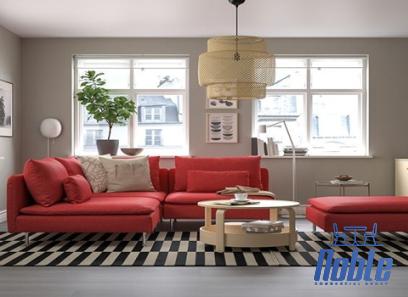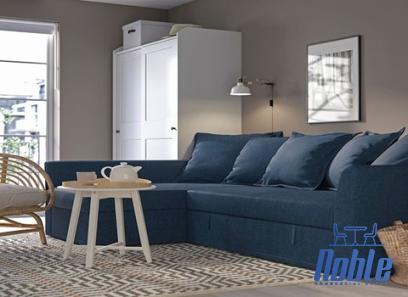this guide is going to help you when choosing the ethnic wooden and other different woods for selecting furniture for your home
Wooden furniture is perfect for any home. Classic and modern wooden furniture styles give an elegant look to your living room, dining room, or bedroom.
Still, of course, different woods suit different interior styles. We’ve put together a quick guide to the materials available for you. Help to understand the advantages of different woods when choosing.
pine furniture
Pine is the ideal material for furniture. Softer and easier to work with than many other materials. Traditionally, pine was used in more rustic craftsman-style pieces, such as country-style dining tables. Still, pine is increasingly being used in modern designs, creating stunning contemporary objects.
A plank of a light wood with subtle nuances. The hue varies depending on the type of pine used, but it can be yellowish or whitish with brown knots and visible grain.
Pine wood is impact resistant and strong (but not as strong as other materials such as oak). Perfect for furniture that can be used anywhere in the home.
Relatively inexpensive and light in color, painting is necessary if you want to add a unique touch to your room. Pine will develop a beautiful rustic patina over time, which means it will last a long time.
However, pine is a softer wood than other wood alternatives, so it is prone to scratches and dents. It may require a lifetime of maintenance to keep it looking like new. So think about how you will use your new furniture and understand if this could become an issue later.
cherry wood furniture
Cherry is another common wood used for furniture, although it can be more expensive. It provides a beautiful finish to any job. Cherry, in particular, is visually stunning with its smooth, straight, fine grain that varies slightly in color from blond to reddish brown.
Being an easily moldable hardwood, it can be used in traditional chair designs and throughout the home. Cherry also polishes well and, combined with its rich color, makes great tables and cabinets.
oak furniture
Oak is a sturdy hardwood widely used for furniture, including living rooms, dining rooms, and bedrooms. Ultimately, oak is sturdy, durable, and extremely durable, making it ideal for furniture.
There are 2 types of oak, white and red. White oak has a tiger-striped grain with yellow rays and flecks. On the other hand, red oak has a swirling grain pattern ranging from light brown to pinkish red.
Both styles have a distinctive look that adds to the room’s overall design, but oak can be paired with a more dated style, depending on the room’s design.
walnut furniture
Walnut is also a hardwood but darker in color than oak. It ranges from chocolate brown to yellow (depending on what part of the tree it comes from). People in the department are not fans of the natural variety of colors.
Walnut is a very strong and stable wood, which makes it ideal for intricate carvings. It is often found on beautiful headboards and ornate wardrobes and cabinets. However, this big advantage means that nuts can be more expensive than other alternatives.
We hope you find this guide to the different types of wooden furniture useful. Discover our full range of wooden furniture online. If you have any questions about your needs or the best product for your home, stop by our showroom in Stockton and speak to an expert.
The secrets of combining wood tones from an interior design expert
Variations in colors, patterns, textures, and styles are key to decorating and keeping things interesting…but wood furniture and finishes can be tricky. Is mixing wood tones a problem? Ideally, the space should flow well with a cohesive and useful look.
But that’s not always possible for those who don’t buy all of our furniture from the same place simultaneously. If you’re the type who puts pieces together over the years, mixing and matching heirloom, purchased, and found items in various finishes, chances are you’ll mix up wood tones at some point.
Artcentric Interior Designer, CEO, and Creative Director, Susann Goerg, said: There is nothing worse than having two planks of wood that are almost identical in tone but not the same and look like a gap. ”
Note the bass.
Wood finishes don’t have to match, but they should complement each other, says Goerg. Look at the color bias of each wood to see if it’s warm or cool, and make sure the shades match regardless of the finish.
The coffee table, for example, is darker than Kay’s Curated Somerville Nest floor. Still, it blends in well with a similar warm quality either way.
Go with the grain.
If many different planks of wood have a prominent grain, try to keep the same pattern and maintain the “feel” of the piece. “It can create a unique look that’s more ‘rustic,’ but often desired in a more ‘rustic’ style,” says Gel. The two bold personalities are commanding attention in the same space. ”
Use tampons.
Placing a wooden table directly on another wooden floor draws attention to their differences. “The simplest and least complicated solution is to use the rug as a visual barrier and a transitional piece, which keeps the controversial wood tones next to each other and visually imperceptible,” he explains.
Here, a weathered gray table by Mulu’s Creative + Vintage Collective Den is separated from the warm wood floor by a traditional style rug.
don’t go crazy
Choose a few finishes first, then repeat each finish throughout the room. Georg says: Otherwise, you will feel confused and have no chance to shine. Above, Marci & Robert’s Bright and Tidy Southern Ranch dining room has light floors and dark wood chairs. Each color and/or tone is seen at least once elsewhere in the room.
When in doubt, white.
Like basil and tomato, white and wood are part of these magical combinations. They just work. If you have a variety of wood tones that look nutty, sprinkle a few white sections (paint, furniture, etc.)
to break it up and calm any potential craziness. Laurel & Margot’s The Kitchen Celebration of Crafts uses lots of white on the walls. And island.
It’s not hard and fast decorating rules, but different ways of thinking about wood apply to your home. If you find other strategies that work for you, please share them in the comments.










Your comment submitted.